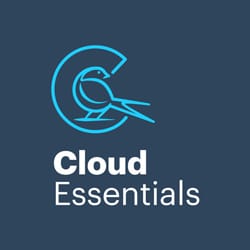In today’s data-driven world, data loss prevention (DLP) isn’t just a nice-to-have – it’s essential for protecting sensitive information across all corners of an organisation. When it comes to choosing the right DLP solution, however, things can get a bit complex. Should you rely on one unified DLP solution or opt for specialised tools tailored to specific areas?
To answer that question, let’s break down the three main types of DLP (Cloud, Endpoint, and Network), explore how Microsoft approaches them from a consolidated standpoint, and discuss the pros and cons of this type of unified DLP solution.
What is DLP?
Data Loss Prevention (DLP) is all about protecting sensitive data from loss, unauthorised sharing, and regulatory breaches. This is done using tools to classify critical data, identify policy violations, and enable quick remediation. DLP can – and should – be deployed across endpoints, networks, and cloud systems to protect data throughout the enterprise.
DLP is required by ISO 27001:2022 for organisations handling sensitive data, but also supports compliance with standards like SOC 2, PCI DSS, and HIPAA.
Cloud vs Endpoint vs Network DLP
Each type of DLP focuses on securing data in a different environment, providing targeted protection at the point where the data is stored, accessed, or transmitted. Many organisations will need to deploy all three types of DLP to achieve comprehensive data protection.
Cloud DLP
Cloud DLP protects sensitive data stored in cloud platforms and services like Microsoft 365, Google Workspace, or AWS. With Cloud DLP, organisations can monitor, classify, and control data as it’s created, stored, and shared within cloud environments, ensuring sensitive information isn’t intentionally or unintentionally exposed or accessed inappropriately. Cloud DLP has become increasingly important as more and more companies move critical data to the cloud.
Endpoint DLP
Endpoint DLP focuses on safeguarding data on devices like laptops, mobile phones, and desktops. It acts as a digital watchdog, monitoring data transfers and activities on these devices to prevent unauthorised access, use, or sharing. By implementing Endpoint DLP, organisations can secure data no matter where it’s accessed (particularly important for organisations supporting remote workers) and reduce risks tied to lost or stolen devices.
Network DLP
Network DLP protects data as it travels across an organisation’s network. It identifies sensitive data in motion, like emails, file transfers, or web traffic, and deploys blocks (or alerts) on unauthorised transmissions. Network DLP ensures sensitive data remains protected whether it’s moving between devices, servers, or cloud applications, providing a comprehensive layer of security across all communication channels.
Microsoft’s consolidated DLP approach
Microsoft offers a unified approach to DLP across all three layers – cloud, endpoint and network – integrating DLP features across its extensive suite of products for seamless, cross-platform protection.
Microsoft Cloud DLP
In the cloud, Microsoft DLP integrates seamlessly with Microsoft 365 services, including Exchange Online, SharePoint Online, and OneDrive for Business. It leverages built-in sensitivity labels and policies to detect and protect sensitive information.
Using Microsoft’s unified compliance centre, organisations can create and manage DLP policies that monitor and control data as it is created, stored, and shared in the cloud. Done right, this prevents leaks while also ensuring compliance with regulatory requirements.
Microsoft Endpoint DLP
On endpoints, Microsoft DLP extends its capabilities through Microsoft Defender for Endpoint. This solution monitors data activities on devices, providing real-time protection against unauthorised access and data exfiltration. It supports a range of operating systems, ensuring that sensitive information remains secure, even when accessed from personal or corporate devices. Through advanced analytics and automated response mechanisms, it mitigates risks associated with data breaches, lost, or stolen devices.
Microsoft Network DLP
For network protection, Microsoft DLP is embedded within Microsoft Cloud App Security and Microsoft Defender for Identity. These solutions monitor network traffic and user activities, detecting anomalies and potential data breaches. By analysing data flows within and across network boundaries, Microsoft DLP can enforce policies that prevent unauthorised data transfers, ensuring sensitive information is safeguarded both in motion and at rest.
Unified DLP vs Specialist Tools
One of the questions we often get asked is whether it’s better to use a single, unified DLP solution like Microsoft’s, or a specialised tool for each DLP type. Like most things, the answer isn’t exactly black and white.
Let’s take a look at the pros and cons of each approach.
Single, Unified DLP Solution
A unified DLP solution like Microsoft’s offers a streamlined approach, providing consistency, ease of management, and centralised policy control across the organisation. With one tool handling Cloud, Endpoint, and Network DLP, there’s less complexity, lower administrative overheads, and fewer opportunities for gaps in coverage to sneak in. Microsoft’s solution also integrates smoothly with its suite of tools, making it simpler for organisations already invested in Microsoft’s ecosystem.
Pros:
- Simplified management with a central control hub
- Consistent policy enforcement across cloud, endpoint, and network environments
- Lower administrative burden and cost-effective for existing Microsoft customers
Cons:
- May not offer the specialised features found in standalone DLP tools
- Limited to Microsoft’s ecosystem which can be challenging if your organisation uses a multi-vendor environment
Specialist DLP Tools
On the other hand, specialised DLP tools can offer deeper, more tailored functionality for each environment. By using the best-in-class solutions for Cloud, Endpoint, and Network DLP, organisations can benefit from advanced features designed specifically for each type of data flow and usage pattern. This can result in better protection but often comes with significantly increased complexity.
Pros:
- Best-in-class features tailored to each environment
- Flexibility to adapt to non-Microsoft or mixed IT environments
Cons:
- Higher administrative burden due to managing multiple tools
- Potential for policy inconsistencies and integration challenges
- Increased cost and management complexity
Finding the right fit
For most organisations, Microsoft’s unified DLP solution offers the ideal blend of simplicity and robustness. For some, however, the tailored protection provided by a specialist approach might be worth the additional management complexity.
If the choice isn’t clear, remember that you don’t have to make the call on your own. We’re here to help with both strategic guidance and hands-on deployment.
Our multi-disciplinary team can simplify Microsoft Purview’s rollout – to whatever extent best suits your needs – while bringing stakeholders on board, aligning decisions, and applying best practices to avoid common pitfalls like data discovery challenges and false positives.
Let us help you protect your data effectively and efficiently. Get in touch today!

